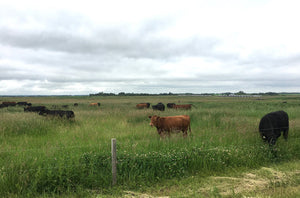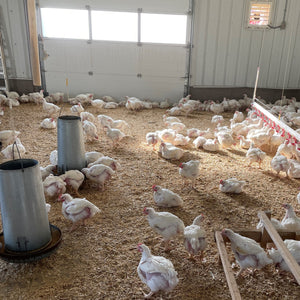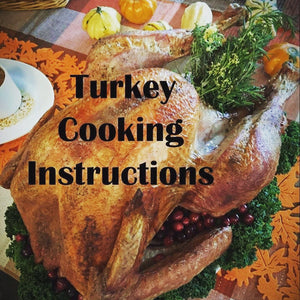Colour Changes In The Yolk Of Eggs Is Normal and Natural

The last of our laying hens were moved inside late last week, just in time for the cold to arrive. Many years in the fall the hens are moved from their movable outdoor shelters to inside warm barns over several weeks. This results in some of our eggs still having more colorful yolks and others having their lighter winter yolks. Sometimes you can have multiple shades of yellow yolks in the same carton of eggs. These Colour Changes in The Yolk of the Eggs is Normal and Natural.
If you consume our eggs on a regular basis you will notice that the colour of our egg yolk changes throughout the year. These natural colour variations that the egg yolks have are based on what the hens have available to eat. Everything from the grains they receive, the bugs that are available and the different variety of grasses and weeds that they eat will all have a different affect on the colour of the yolk.
We do not add any egg colourants to the feed we give our hens. Colourants are routinely added to the feed of hens in order to control the colour of the egg yolk. Feed companies and large egg producing company’s have done studies to find out what colour of egg yolk is most attractive to the consumer. They have then developed formulas for the colour additives, so that the perfect amount can be added to the feed to achieve the exact colour that the majority of consumers think is the best. There is even an egg colour fan that can be used to see what colour of yolk you have and help you choose what colour of yolk you would like to achieve. This is resulting in an unrealistic expectation by many consumers as to what normal egg yolks should look like, as they are being given a colour that appeals rather than a natural colour of yolk.

It is also resulting in the expectation that every egg will have the same colour yolk all year round. This is not natural and is achievable only if colourants are added to the feed. This change in colour between eggs and during different seasons is amplified if, like our hens, the birds are free range and have access to grass, weeds, bugs and grubs in the spring, summer and fall. There are natural patterns over the summer when certain grasses and weeds are plentiful and then as their peak season ends they are replaced with other grasses. An example of this is dandelions, they are plentiful in the early spring and the start of summer but are not as plentiful in the late summer. Grass hoppers are not plentiful in the spring but can be very plentiful in the late summer. This constant change as to what the birds are able to eat can cause the colour of the yolk to change frequently. In some of our cartons of eggs (especially in the summer) you will have various shades of yolks in one dozen.
The colour of an eggs yolk does not reflect the nutritional value of the eggs. The nutrition of an egg is determined by the nutritional content of what the hen eats, and yolk colour is not an adequate indication of this. Yolk color comes from carotenoids. A nutritious feed made with ingredients such as wheat (the most common grain used in western Canada) has less carotenoids then a feed made with corn. Both feeds can have the exact same nutritional profile resulting in a healthy egg, but the egg laid from a hen fed the wheat based feed will have a less yellow yolk then the corn fed. To make sure our hens have the most nutritious feed possible we add alfalfa meal to the hens feed year round so that we know that they are receiving the nutritional benefits of grass even when there is very little fresh grass such as in early spring, during drought or when they are inside their warm barns for the winter. While the dried alfalfa does have a small effect on the colour of the eggs it is very small since the natural process of drying alfalfa in the sun reduces significantly the amount of carotenoids.
The colour of the yolk also does not affect the taste of the egg, as the taste is determined by what the hen is fed. Pale yolked eggs can be just as flavorful as very dark yolked eggs. As the saying goes we eat with our eyes first, so often we will assume that a pale yolk is bland and a dark yolk is flavorful even before we taste it. This is one of the reasons why some conventional companies are adding colourants to the hens feed to alter the yolk colour, so our eyes can trick out brain into thinking that an egg is more flavourful then it actually is.
Egg colour does not indicate the living conditions or health of the bird. The living conditions of our hens does not change during the summer, however you will notice that the colour of the yolks will change throughout the summer. This is entirely due to the grass and bugs that are available at the time. This past summer we had a very bad drought and every week that it went on there was less and less fresh grass. We noticed that the colour of the yolk was changing week to week as the grass became less and less fresh due to the dry conditions. With colour additives, intensive caged birds can have the same colour yolk as organic, certified humanely raised, summer free range birds.
Our summer birds are raised outside in movable shelters that are moved every day onto fresh grass. In addition to their feed, they have lots of access to all the grasses, weeds, bugs and grubs that are available at that time. This will change the colour of the eggs to a brighter yellow. In the winter our birds are raised inside warm barns where they are provided with lots natural light and room to move around. Because they do not have access to pasture and the fresh grass the eggs will naturally become a paler yellow colour. This change is natural and expected every year.
We strive to raise an organic product that is raised without any unnecessary additives or chemicals. By embracing the natural colour variations of our egg yolks we are able to focus on the health and happiness of our hens. The feed our hens receive is not based on the colour of the yolk, instead we focus on creating a balanced feed for the hens so that they and their eggs are as healthy as possible.
Ron and Sheila Your Farmers
- Sunworks Farm






